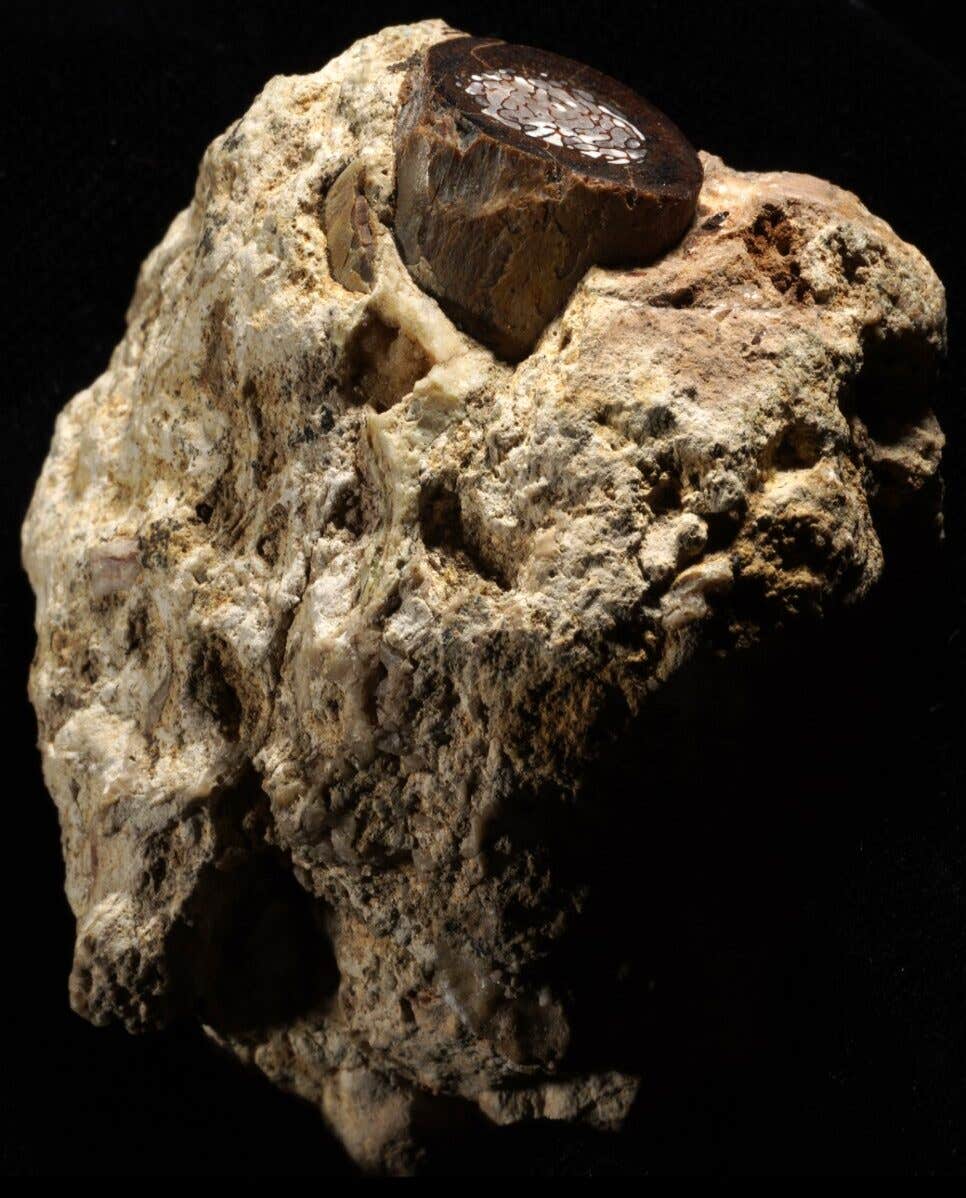Lifesaving Vaccine Patch Protects Against Mosquito-borne Zika Virus
Zika virus, which can cause mild illness in most cases, becomes particularly perilous when contracted during pregnancy.

[Dec. 17, 2023: JD Shavit, The Brighter Side of News]
Dr Jovin Choo applying vaccine to the high-density microarray patch (HD-MAP). (CREDIT: University of Queensland)
In a groundbreaking development, scientists are in the process of creating a needle-free vaccine patch designed to safeguard individuals against the Zika virus, a mosquito-borne pathogen that can have severe health consequences.
This innovation utilizes the High-Density Microarray Patch (HD-MAP), developed by The University of Queensland and commercialized by Vaxxas, to deliver a vaccine developed at the University of Adelaide. Early tests on mice have shown that the prototype patch effectively triggers an immune response against the Zika virus.
Zika virus, which can cause mild illness in most cases, becomes particularly perilous when contracted during pregnancy. Pregnant women infected with the virus face an increased risk of miscarriages, stillbirths, or giving birth to infants with congenital malformations.
The virus gained worldwide attention in February 2016 when the World Health Organization declared it a Public Health Emergency of International Concern as it rapidly spread across 40 countries in Latin America, resulting in more than 1.5 million confirmed or suspected cases in just six months.
Related Stories:
Dr. Danushka Wijesundara, a researcher at Vaxxas and an alumnus of The University of Queensland, expressed the importance of this new vaccine delivery method in the fight against Zika. He emphasized that Zika poses a significant risk to people in various regions, including the Pacific, Southeast Asia, India, Africa, South and Central America.
Dr. Wijesundara stated, "We can change the way we combat Zika virus with the HD-MAP patch because it is an effective, pain-free, simple to apply, and easy to store vaccination method." This innovative approach delivers the vaccine directly to immune cells beneath the skin's surface through thousands of tiny microprojections.
In their pre-clinical trials, researchers found that the vaccine administered via the HD-MAP patch provided rapid protection against live Zika virus by targeting a specific protein called NS1, which is crucial to the virus's survival. Dr. Wijesundara pointed out a remarkable result, stating, "The vaccine patch evoked T-cell responses that were about 270 per cent higher than from a needle or syringe vaccine delivery."
Technicians working with the high-density microarray patch in the Vaxxas cleanroom. (CREDIT: Vaxxas)
One of the key advantages of this vaccine is its unique mechanism of action. It targets a protein inside the Zika virus, as opposed to one on its surface. This approach ensures that it does not enhance the symptoms of closely-related viruses, such as dengue fever, in individuals who have been vaccinated.
Associate Professor Branka Grubor-Bauk from The University of Adelaide explained, "This vaccine is unique because it targets a protein inside, rather than outside of the virus, meaning it won't enhance the symptoms of closely-related viruses such as dengue fever in people who've been vaccinated."
The high-density microarray patch (HD-MAP) up close. (CREDIT: University of Queensland)
Furthermore, this groundbreaking vaccine patch may have broader applications in the field of virology. Dr. David Muller, from The University of Queensland's School of Chemistry and Molecular Biosciences, highlighted its potential to combat other viruses belonging to the flavivirus family, such as dengue or Japanese encephalitis.
"Because the protein we're targeting plays a central role in replication in a virus family known as flaviviruses, there's the potential to apply our approach to target other flaviviruses," Dr. Muller stated. This approach could also be extended to create vaccines that provide protection against the entire family of flaviviruses, offering a more comprehensive defense against these viral threats.
Dr David Muller holding the high-density microarray patch (HD-MAP). (CREDIT: University of Queensland)
One significant advantage of the HD-MAP delivery platform is its ability to maintain vaccine stability at elevated temperatures. Researchers discovered that the patch retained its vaccine potency when stored at 40 degrees Celsius for up to four weeks. This breakthrough has the potential to extend the reach of vaccines to low- and middle-income countries where maintaining proper refrigeration is often a challenge.
The vaccine's stability at high temperatures could revolutionize vaccination efforts in regions where refrigeration is limited. As research progresses, this innovation may become a crucial tool in global health efforts to protect individuals from Zika and other viral threats.
What is Zika Virus?
Zika virus is a member of the flavivirus family, related to viruses like dengue and yellow fever.
It's primarily transmitted through the bites of infected Aedes mosquitoes, particularly Aedes aegypti and Aedes albopictus.
The virus was first identified in 1947 in Uganda's Zika Forest, hence the name.
Symptoms and Transmission:
Most people infected with Zika don't experience any symptoms or have mild symptoms like fever, rash, headache, joint pain, red eyes, and muscle pain.
The virus can be spread from an infected person to their sexual partners through semen or vaginal fluids.
Pregnant women can transmit the virus to their fetuses, potentially causing serious birth defects like microcephaly and other congenital malformations.
Here are some resources for further information:
Centers for Disease Control and Prevention (CDC): https://www.cdc.gov/zika/index.html
World Health Organization (WHO): https://www.who.int/news-room/fact-sheets/detail/zika-virus
The research is published in Molecular Therapy Nucleic Acids.
For more technology news stories check out our New Innovations section at The Brighter Side of News.
Note: Materials provided above by The Brighter Side of News. Content may be edited for style and length.
Like these kind of feel good stories? Get the Brighter Side of News' newsletter.



